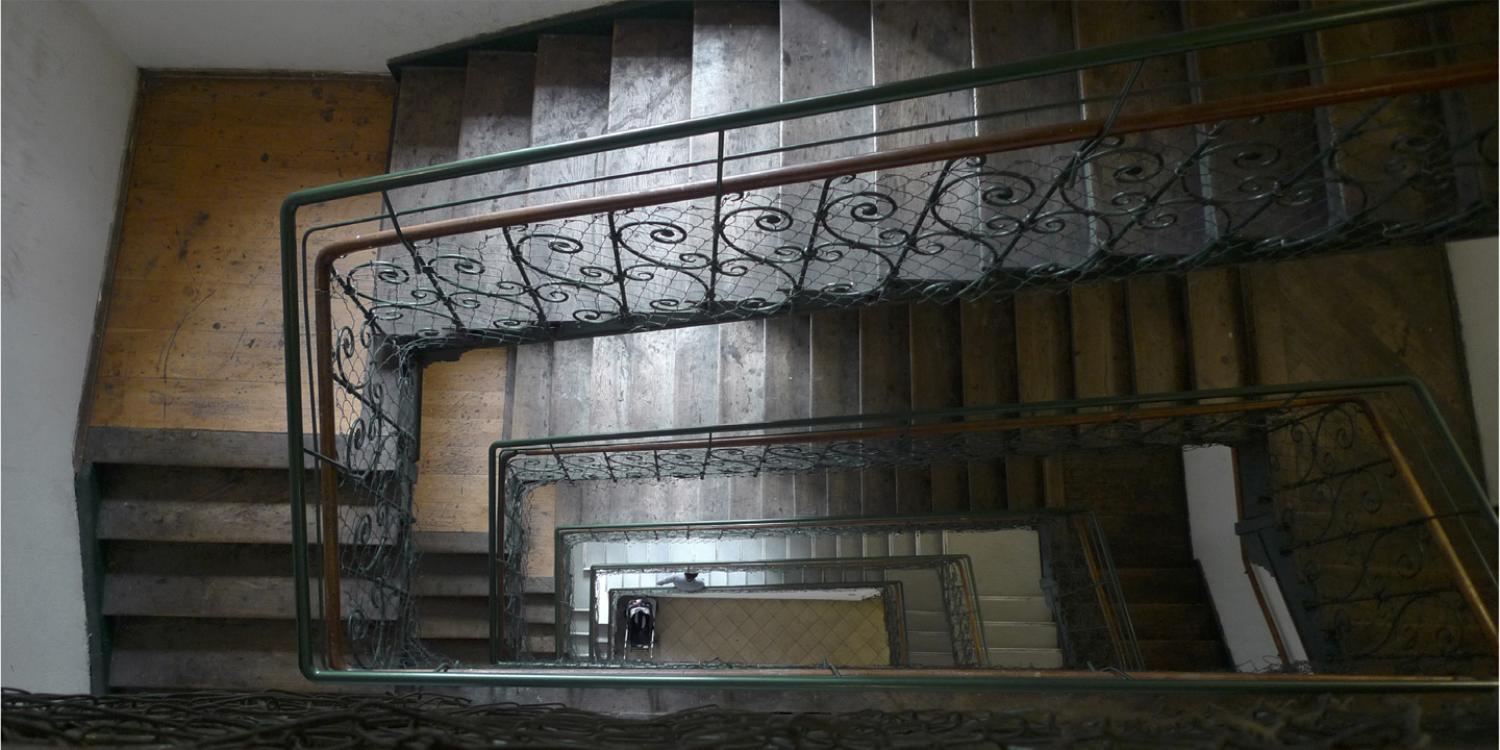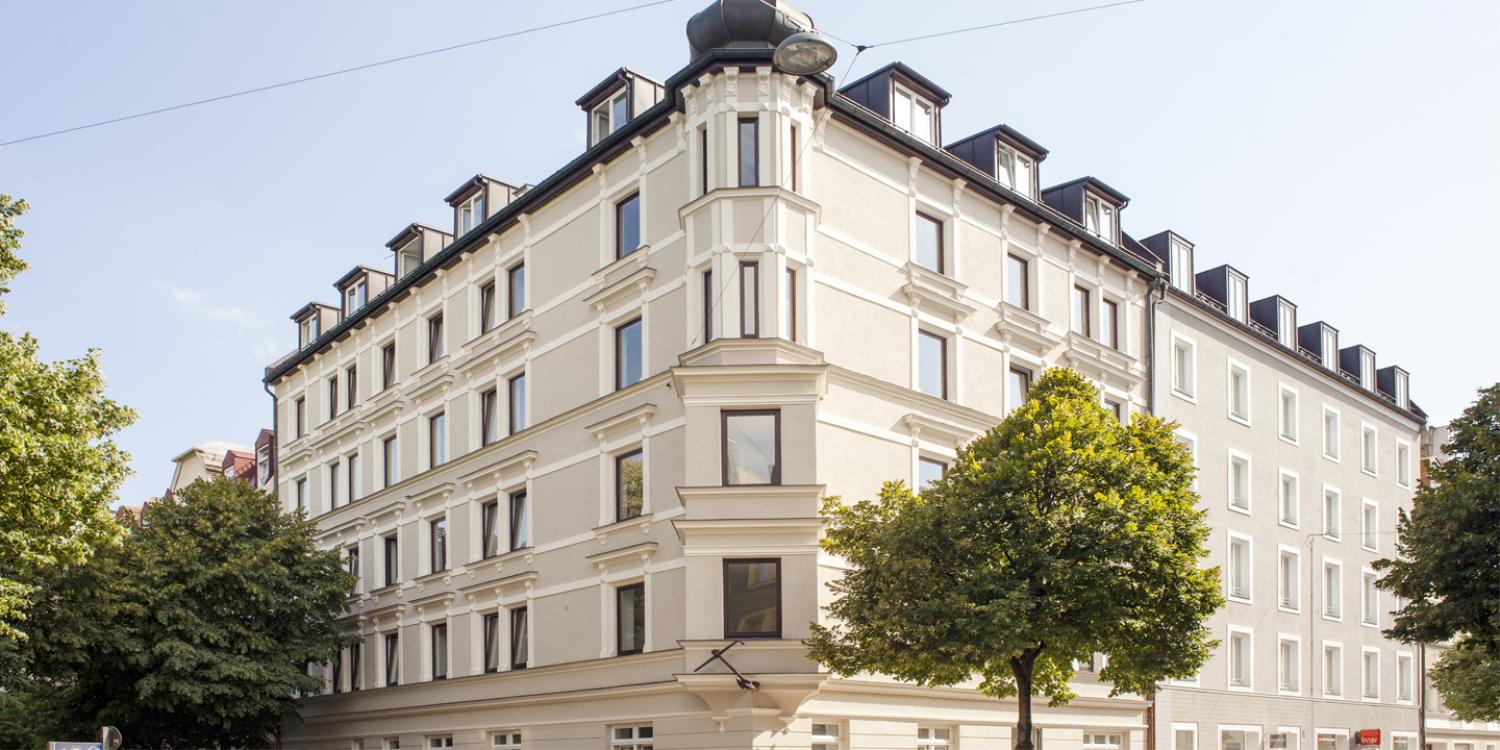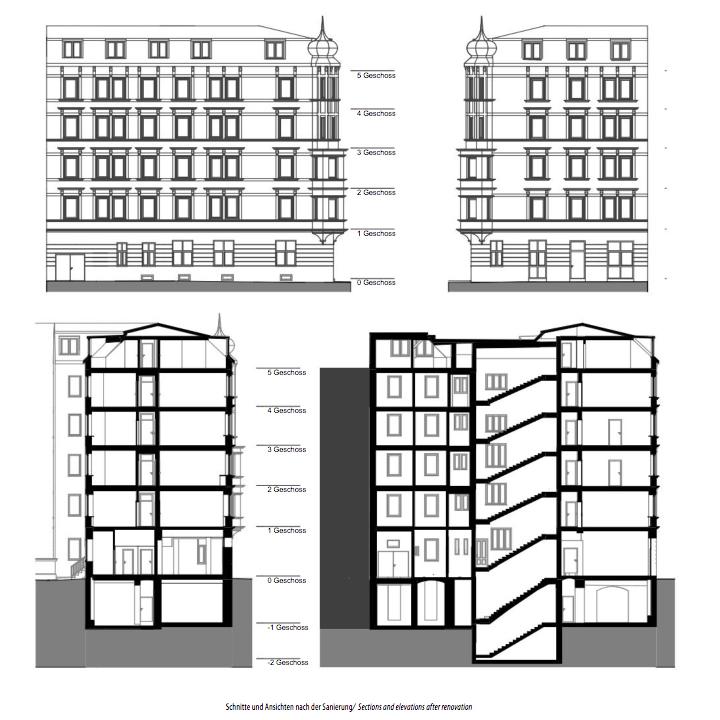According to § 53 para. 1 clause 1 of the German Asylum Procedure Act (AsylVfG), refugees who have submitted a claim for asylum and who do not or are no longer required to reside in an immigration centre should generally be housed in shared accommodation.
The residential building in Munich was already being used as a centre providing accommodation and support for refugees when the managing authority, the government of Upper Bavaria, approached the building owner in 2014 with a request to increase the number of residents and expand the building.
The residential building is located in the Haidhausen district of the city on the eastern bank of the River Isar. This historic area of the city was spared the destruction of the Second World War and was largely preserved intact — around two thirds of the residential houses here date from before 1914. Thanks to its diverse cultural scene, wide range of leisure facilities and its proximity to the city centre, Haidhausen is one of the most popular residential areas in Munich. This middle-class district is characterised by its mixed population and tolerant atmosphere. Now, the neighbourhood is also home to 102 asylum seekers, following the renovation of the listed corner building, which dates back to 1900.
To create new living space in the building, the area that had previously been used as a laundry room on the ground floor was converted for habitation. Some of the apartments on the upper floors were restructured, with minor changes made to integrate residents into the existing structure of the house.
The resulting building does not bear any of the typical hallmarks of a hostel — instead, it has 17 separate 2/3 room apartments with their own bathrooms and kitchens, so that residents can prepare their own food independently. Each apartment can accommodate a maximum of six people in compliance with regulations on asylum seeker accommodation, which stipulates that the building must provide at least 7 square metres of living and sleeping space per person. The building is occupied by families and individuals from a number of different countries.
Residents can also use the laundry room to wash and dry their clothes. The building has a common room where residents can meet others; this area also serves as a homework room, a place to hold German lessons or organise resident meetings.
The ground floor also offers space for the residence’s management team and asylum advisors.
A trained team of management staff is available on site to assist with all kinds of tasks and provide information for residents and the authorities.
This service focuses on providing orientation guidance, advice and information to enable residents to more effectively cope with the everyday problems they may encounter. The social services team on site also connects the voluntary teams working in and around the accommodation.


